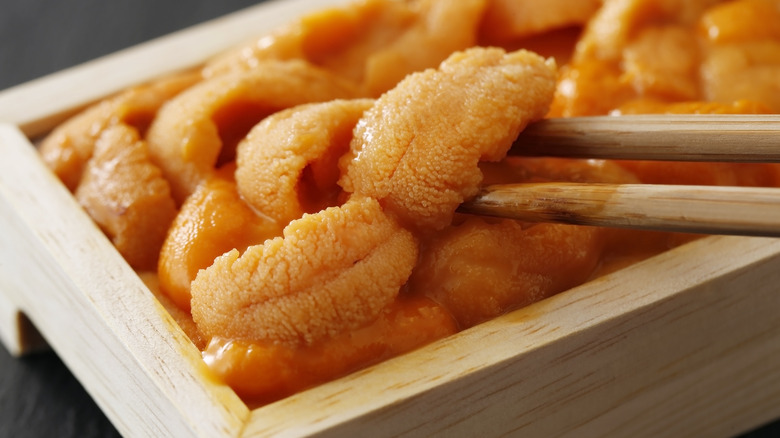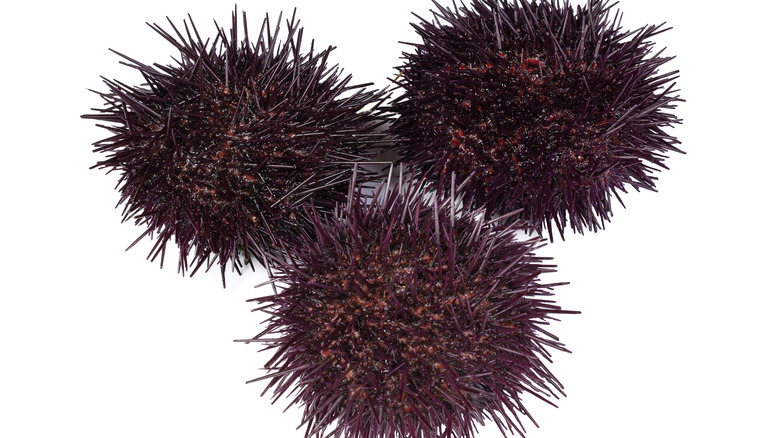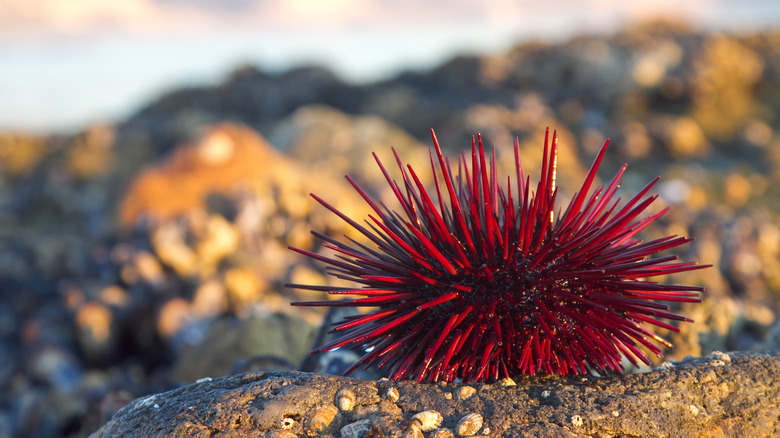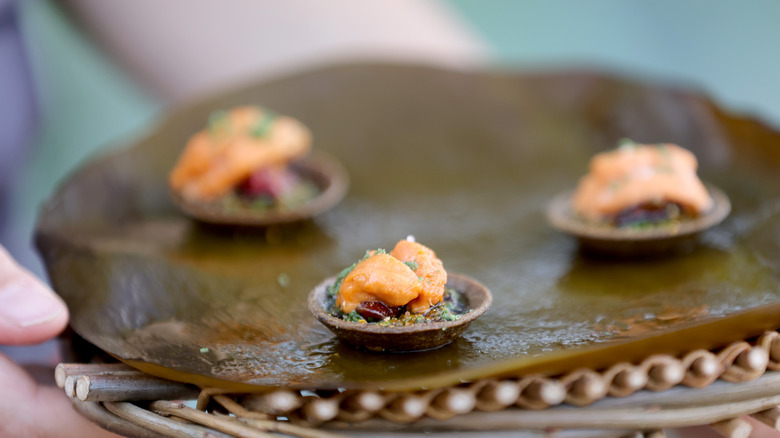The Difference That Sets American And Japanese Sea Urchin Apart
The sea urchin, or echinoidea, is a spiky and round ancient ocean creature that has been around for 450 million years and is considered a delicacy. The ocean creature is often referred to as uni, which is its Japanese name, and the word commonly used on sushi menus.
While there are close to 1,000 species of sea urchin, covering a wide range of sizes and colors, only about 18 are edible. In Japan, most sea urchin you'll find are either the coldwater ezobafun or kitmurasaki varities, whereas the most common American uni species are the strongylocentrous franciscanus (red), the S. purpuratus (purple), and the S. droebachiensis (green). Depending on where you order your sea urchin, there will be variances in taste due to factors like diet, habitat, and species type, and uni that is considered higher quality with come with a heftier price tag.
Japanese sea urchin species
In Japan, the most commonly served sea urchin species are the bafun uni and the murasaki uni (scientific names: Hemicentrotus pulcherrimus and heliocidaris crassispinam, respectively). Murasaki sea urchins are a dark purple color and the most standard ones served. Their diet consists mostly of wakame seaweed, which gives them a subtle taste: salty, sweet, and the slightest hint of fish. Bafun uni are the dark orange variety. This sea urchin type comes from deeper waters than the murasaki variety, which results in a more intense flavor.
Pricier variations of Japanese sea urchin come from Hokkaido and feed on macro algae kombu (a type of kelp). Hokkaido uni is plumper and reportedly has more umami flavor than sea urchins harvested from other regions.
American sea urchin species
While a few other countries like Chile, Peru, Italy, France, and Spain also have their own sea urchin markets and types, American sea urchin is considered to be the main contender against the coveted Japanese sea urchin and comparable in quality.
Sea urchin in America is found on both coasts: but while east coast sea urchin harvesters only find green sea urchins, west coast sea urchin divers come back with red, green, and purple sea urchin varieties. Green sea urchins are the smallest of the bunch, purple sit in the middle, and red sea urchins are the largest.
In between the two coasts, chefs say that sea urchins from California are sweeter and creamier due to the high levels of sulfur in the Golden Coast waters, while uni harvested near Maine are more vibrantly colored and firmer.
Can you substitute American sea urchin for Japanese sea urchin
While the flavors of a sea urchin will vary greatly depending on the waters, temperature, and season the urchins are harvested, the most prominent difference between American and Japanese sea urchins is their size.
American sea urchin varieties are generally bigger than those from Japan, but the taste is comparable, so if you're using uni in a recipe where it's served raw, it's fine to swap one species for another. The most important rule is to make sure that it's as fresh as possible for the best texture and flavor. In Japan, some uni (usually the kind you purchase in a wood box) is treated with a chemical that can impart a bad taste after a few days.
Frequently eaten raw with or without rice, cooked uni can also be found in sauces and pasta dishes, or served simply with bread. Packed with vitamins, minerals, and omega-3 fatty acids, the creamy seafood is a distinctive culinary delight worth seeking out, no matter its country of origin.



